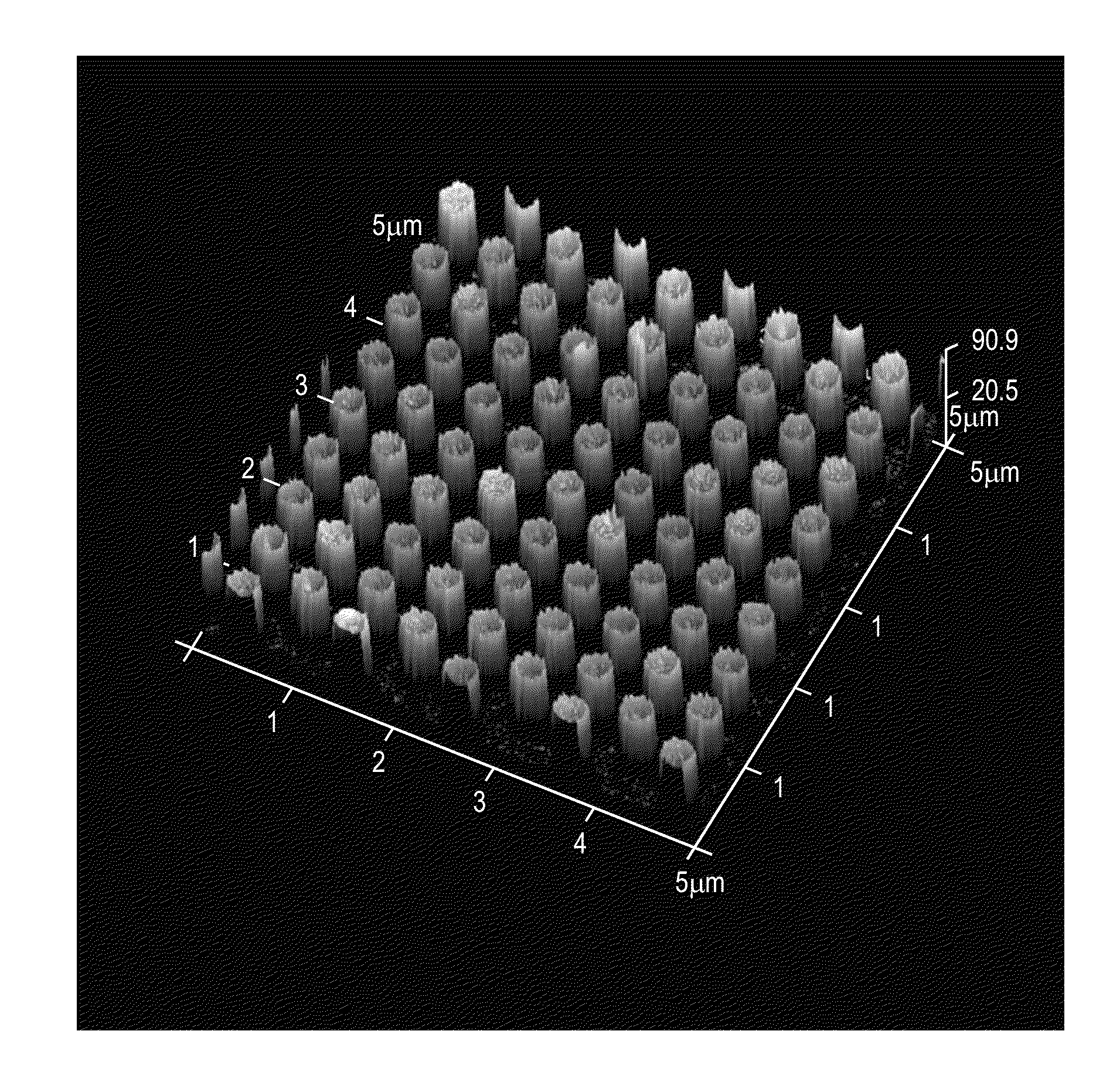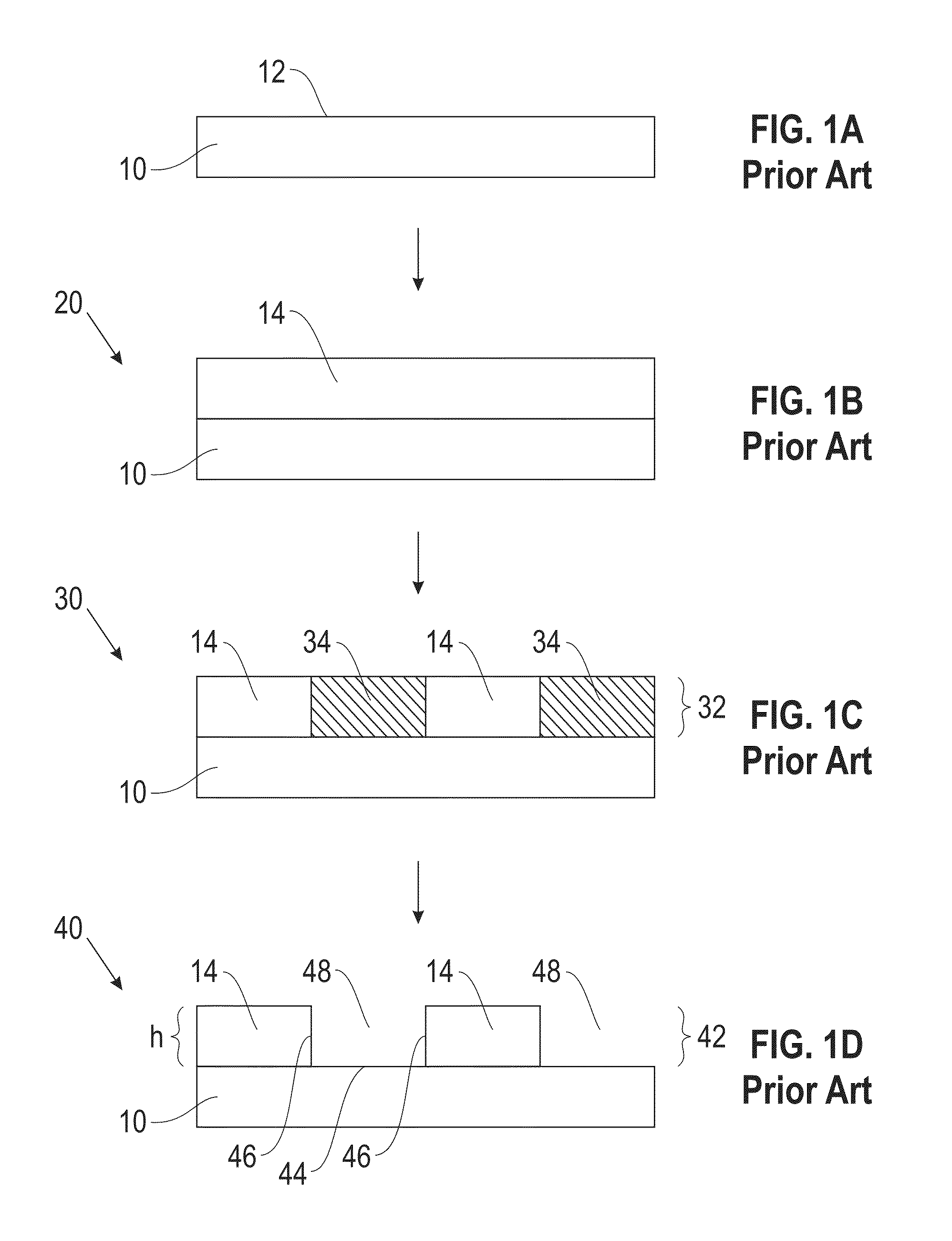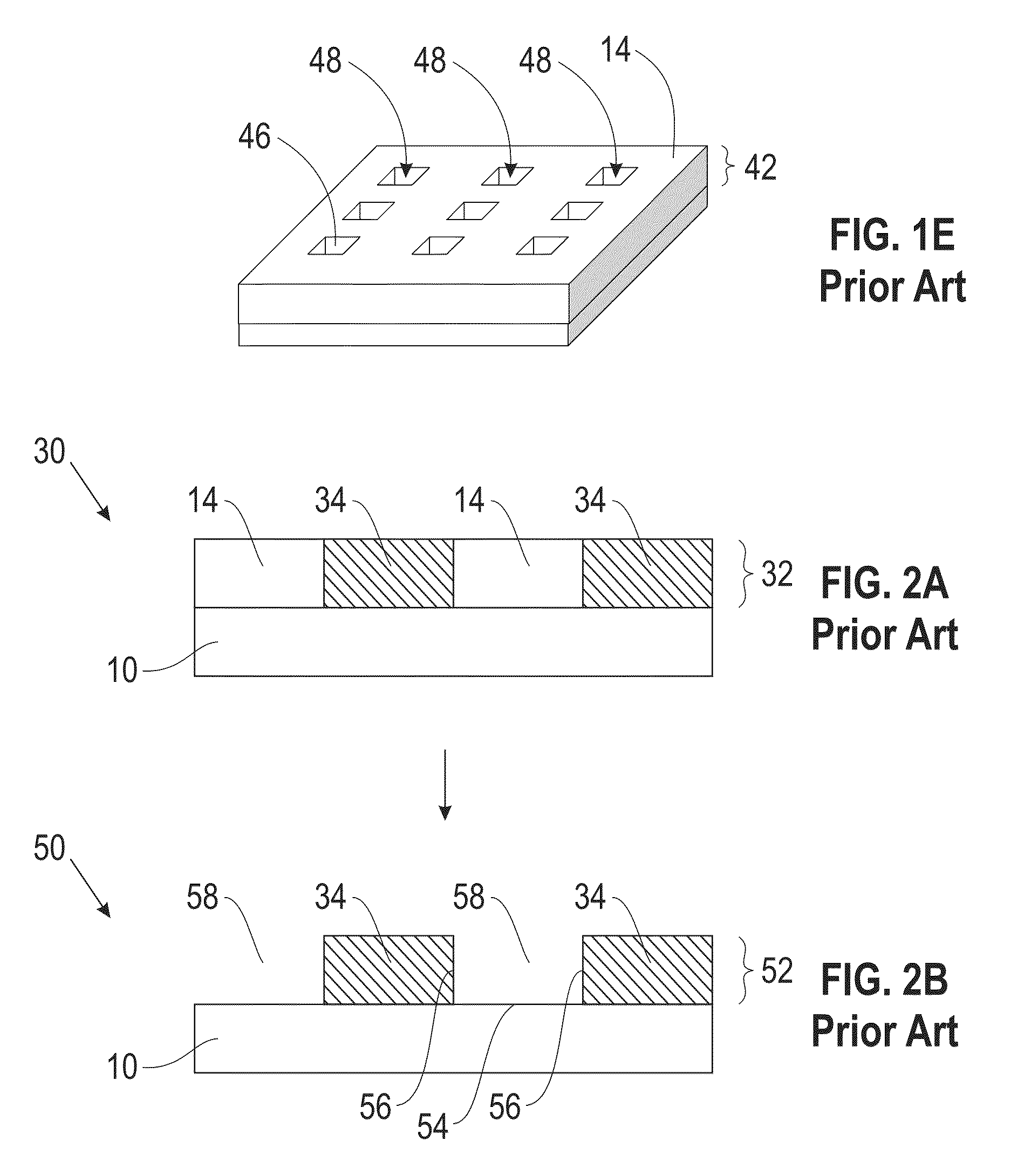Methods of forming nanoparticles using semiconductor manufacturing infrastructure
a technology of manufacturing infrastructure and nanoparticles, which is applied in the direction of manufacturing tools, microstructure devices, coatings, etc., can solve the problems of not necessarily being suitable for making a semiconductor device, and not necessarily a suitable material for the manufacture of a semiconductor devi
- Summary
- Abstract
- Description
- Claims
- Application Information
AI Technical Summary
Benefits of technology
Problems solved by technology
Method used
Image
Examples
example 1
[0123]Formation of polystyrene-coated gold nanoparticles (referred to as Au@PS). For clarity, these nanoparticles are referred to as sub-particles because they are used to form the disclosed particles. All glassware was cleaned with 1% aqueous HCl solution three times, rinsed with distilled water, and then oven-dried prior to use. Colloidal gold sub-particles with an average diameter of 20 nm were prepared by rapidly injecting a sodium citrate solution (1.5 mL, 38.8 mM) into a boiling aqueous solution of HAuCl4 (100 mL, 0.35 mM) with vigorous stirring. After 20 minutes of continued boiling, the solution was removed from the heat and allowed to cool to room temperature. As a representative procedure for forming a polymer-stabilized gold sub-particle, thiol-terminated polystyrene (5 mg) was dissolved in 10 mL of THF and then mixed with 50 mL of an aqueous solution of citrate-coated gold sub-particles in a 250 mL reparatory funnel. Chloroform (25 mL) was then added, resulting in immedi...
example 2
[0124]Formation of polystyrene-b-polyacrylic acid stabilized cobalt ferrite nanoparticles (referred to as CoFe2O4@PS-b-PAA). For clarity, these nanoparticles are also referred to as sub-particles because they are used to form the disclosed particles. 18 nm ferrimagnetic CoFe2O4 sub-particles were prepared following a procedure reported by Sun et al., J. Am. Chem. Soc. 2004, 126, 273-279. Accordingly, Fe(acac)3 (2 mmol), Co(acac)2 (1 mmol), 1,2-hexadecanediol (10 mmol), oleic acid (6 mmol), oleylamine (6 mmol), and benzyl ether (20 mL) were combined in a first mixture and mechanically stirred under a flow of nitrogen. The mixture was heated to 200° C. for 2 hours and then, under a blanket of nitrogen, heated to reflux (˜300° C.) for 1 hour. The black colored mixture was cooled to room temperature. Ethanol (40 mL) was added to the mixture at ambient temperature, and a black material was precipitated and separated via centrifugation at 6000 rpm for 10 minutes. The black precipitate was...
example 3
[0126]Formation of contact hole patterns. A solution comprising a 193 nm photoresist (JSR2073) was spin-coated onto a substrate having an anti-reflection layer coating (780 angstroms of ARC29A, Brewer Science) on silicon. The photoresist layer was baked at 110° C. for 60 seconds, patternwise exposed using 193 nm optical lithography, and post exposure baked at 110° C. for 60 seconds. This was followed by a 30 second puddle development step with 0.26 N TMAH developer to resolve 0.25 micrometer contact hole features.
PUM
| Property | Measurement | Unit |
|---|---|---|
| circular diameter | aaaaa | aaaaa |
| wavelength | aaaaa | aaaaa |
| wavelength | aaaaa | aaaaa |
Abstract
Description
Claims
Application Information
 Login to View More
Login to View More - R&D
- Intellectual Property
- Life Sciences
- Materials
- Tech Scout
- Unparalleled Data Quality
- Higher Quality Content
- 60% Fewer Hallucinations
Browse by: Latest US Patents, China's latest patents, Technical Efficacy Thesaurus, Application Domain, Technology Topic, Popular Technical Reports.
© 2025 PatSnap. All rights reserved.Legal|Privacy policy|Modern Slavery Act Transparency Statement|Sitemap|About US| Contact US: help@patsnap.com



